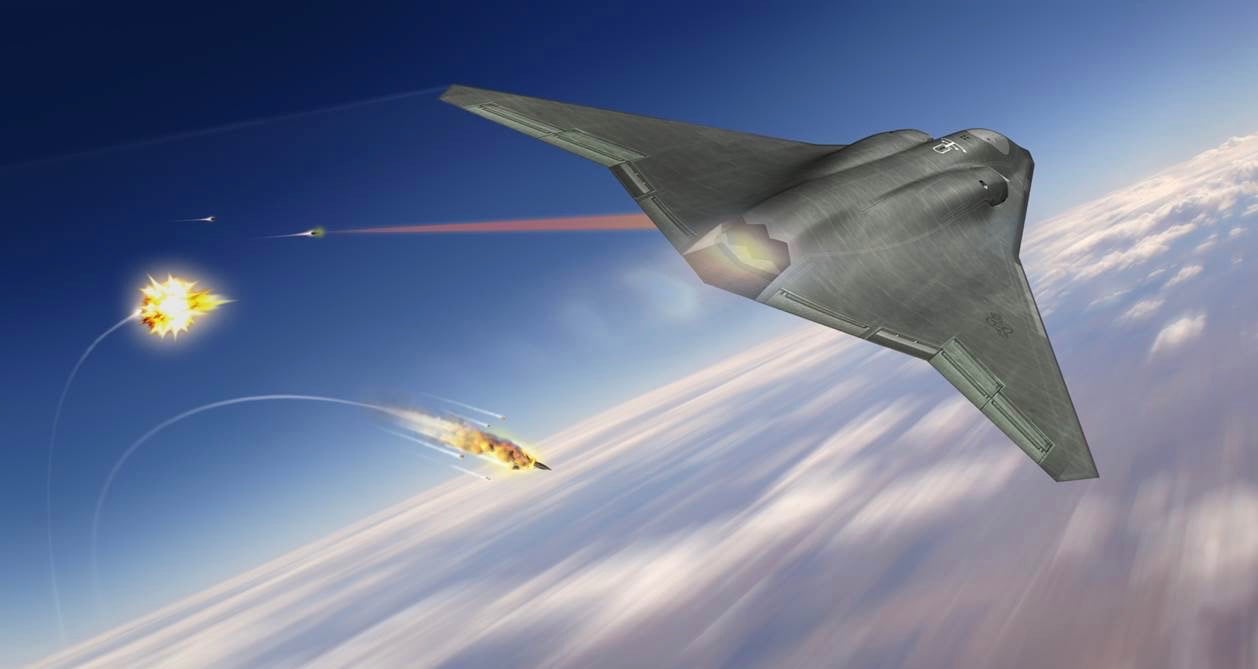
The Next Generation Air Dominance (NGAD) program envisions different types of drones teamed with a sixth-generation fighter. (Northrop Grumman)
AIR WARFARE SYMPOSIUM — After years of work to develop a futuristic stealth fighter and drones that can fly and fight alongside it, the Air Force has now reached an estimate for how many of each it initially wants to buy, according to the service’s top civilian.
The drones, known as collaborative combat aircraft (CCA), will pair with the F-35 and the secretive Next Generation Air Dominance (NGAD) Fighter. Air Force Secretary Frank Kendall said today the service is planning to field 200 NGAD fighters and 1,000 CCAs, a “nominal quantity” officials said will serve as a first tranche, but still the first estimate to be shared. He also suggested an arrangement for the high-tech team: each fighter flying with a pair of autonomous wingmen.
“This figure was derived from an assumed two CCAs per 200 NGAD platforms and an additional two for each of 300 F-35s for a total of 1,000,” Kendall explained during a keynote address at the Air and Space Force Association’s Air Warfare Symposium, adding that the CCAs “will not impact planned fighter crew inventory.”
RELATED: Space Force chief outlines 3-part ‘competitive endurance’ theory aimed at ‘space superiority’
“One way to think of CCAs is as remotely controlled versions of the targeting pods, electronic warfare pods or weapons now carried under the wings of our crewed aircraft,” Kendall said.
Kendall said he and Air Force Chief of Staff Gen. CQ Brown have “recently” given Air Force planners the “nominal” figure of CCAs “for planning purposes.” The CCA figure is “just a reasonable starting point,” Kendall said during a later media roundtable, adding that more than two of the drones could be linked up with a fighter down the road.
During the roundtable, service acquisition chief Andrew Hunter said the first tranche of CCAs are “very much within grasp,” with capability expected to be delivered by the end of the decade.
Kendall left little doubt that the NGAD fighter will be prohibitively expensive, referencing previous projections that it will cost “multiples” of the F-35. “It’s a really expensive airplane,” he said during the roundtable.
RELATED: In Ukraine fight, integrated air defense has made many aircraft ‘worthless’
But the CCAs are meant to ameliorate that problem, Kendall emphasized. If the Air Force only bought aircraft currently in production, including NGAD, it would make the attack fighter fleet “unaffordable.” The CCAs will instead offer the service an “affordable mass” to complement attack fighter capability, Kendall said, whose designs will be guided by a requirement that they be a “fraction” of the cost of an F-35.
Typical of a cutting edge program, the Air Force has revealed few details about the NGAD family of systems procurement effort. Kendall said in July he expected a down-select for the fighter not too far in the future, though it remains unclear even which defense primes are vying for the contract.
At least one full-scale NGAD fighter demonstrator made its inaugural flight in 2020. Air Force officials have declined to give further details about the maker of that aircraft or its capabilities, although they have made clear that digital engineering has been a critical technology that has allowed the service to develop it much more quickly than onlookers had expected.
“What we did was an experimental prototype,” Kendall said in June. “We basically had an X-plane program which was designed to reduce the risk of some of the key technologies that we would need for a production program.”






















